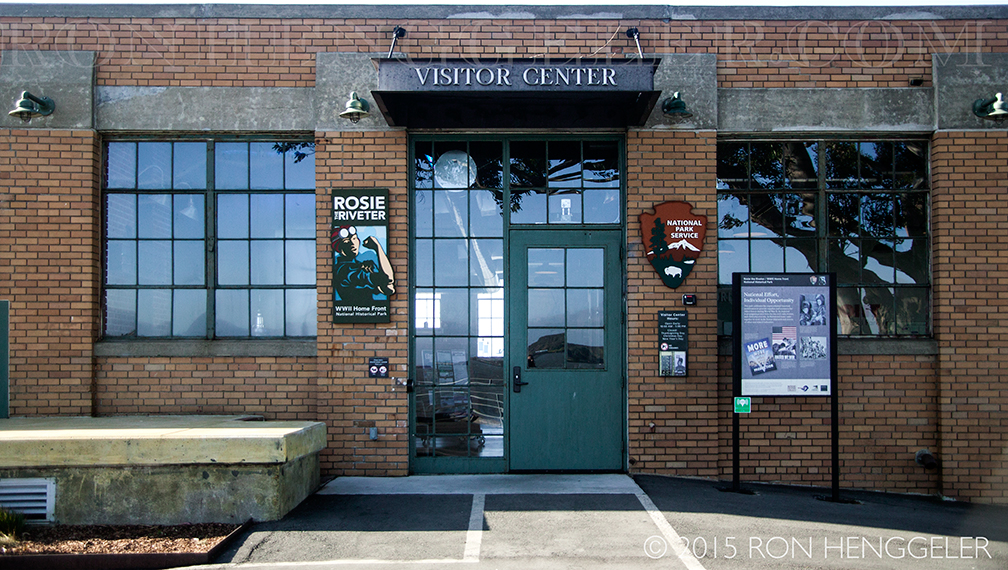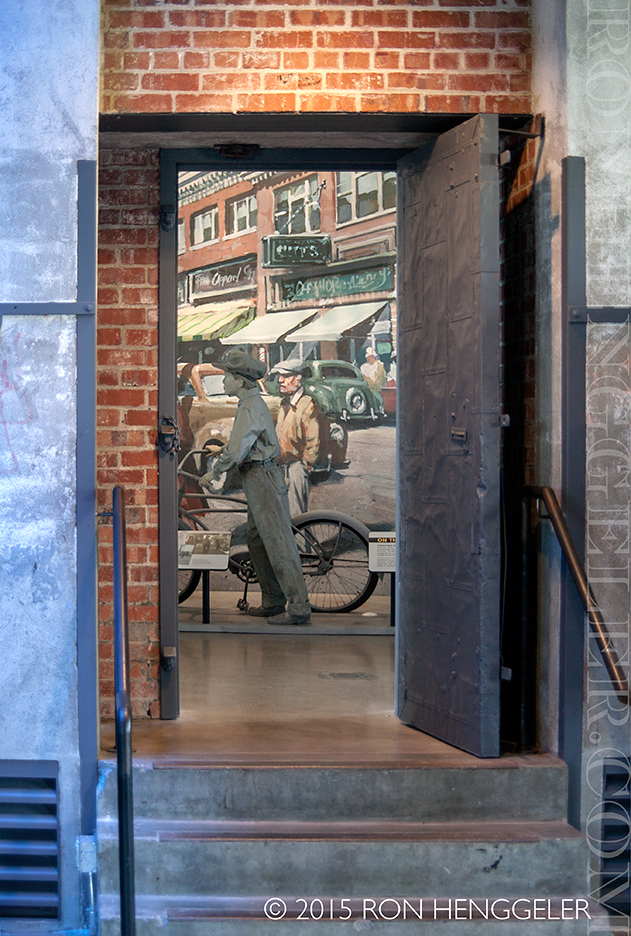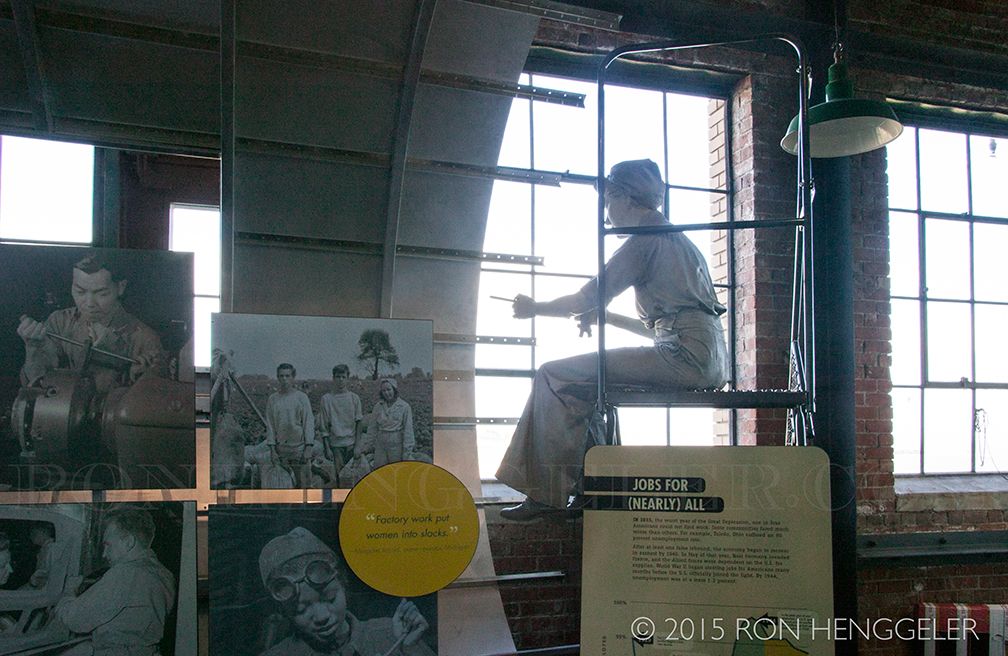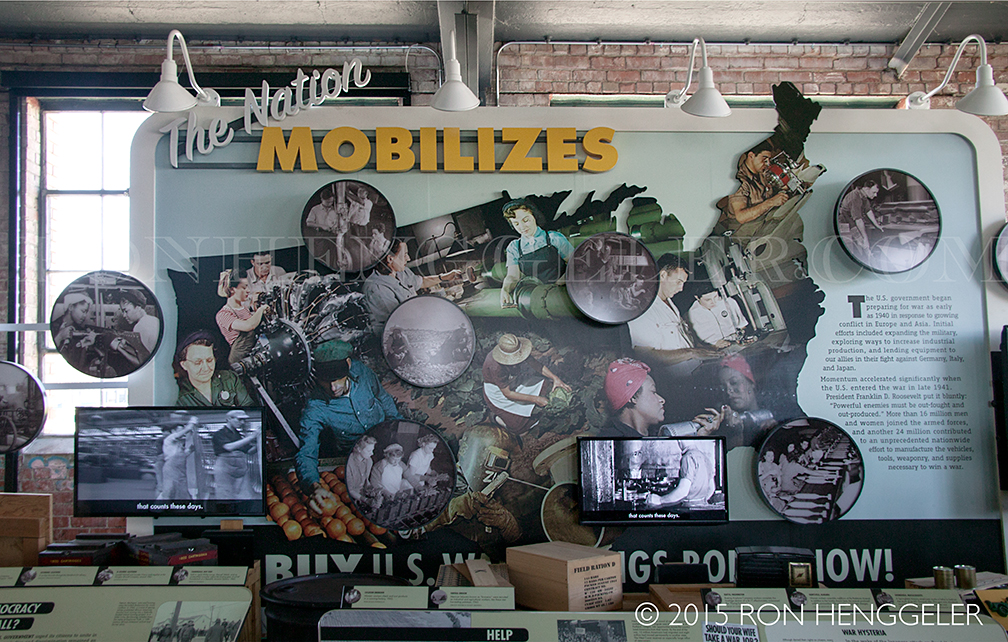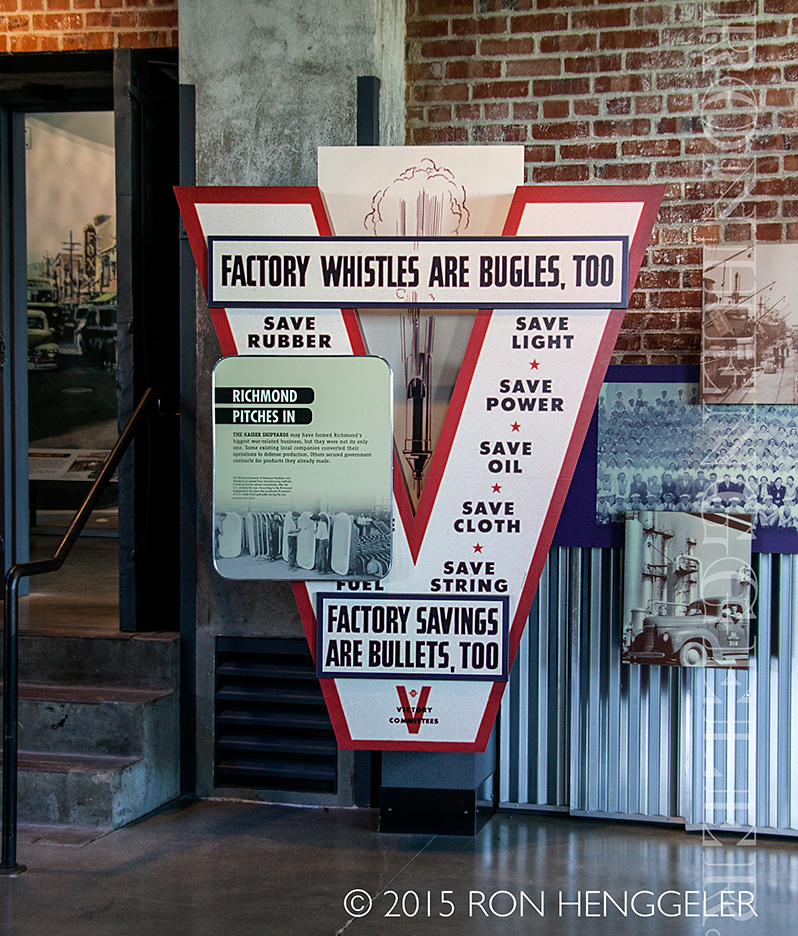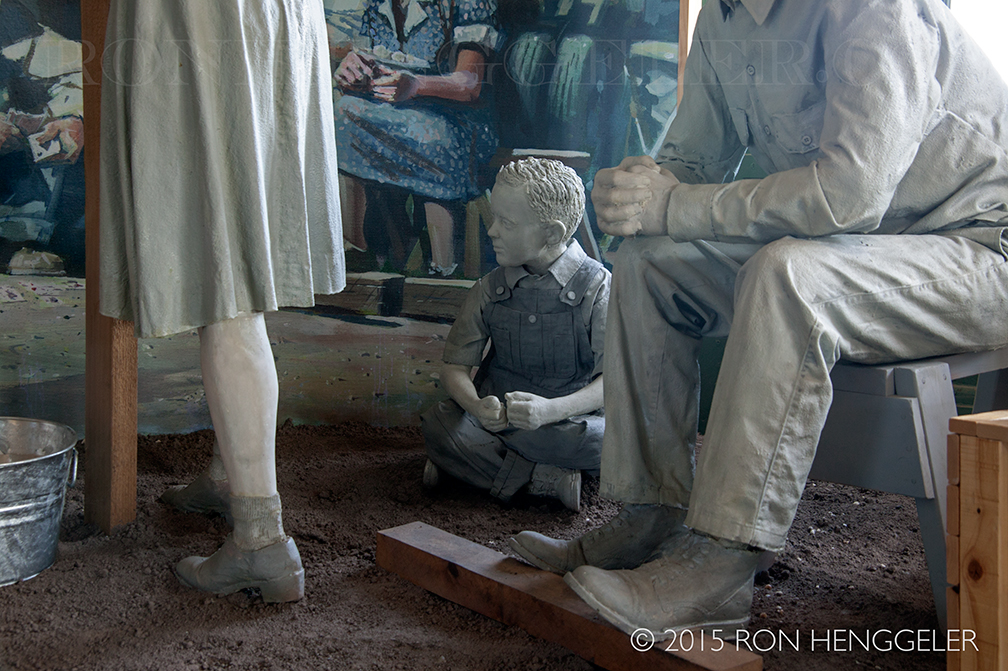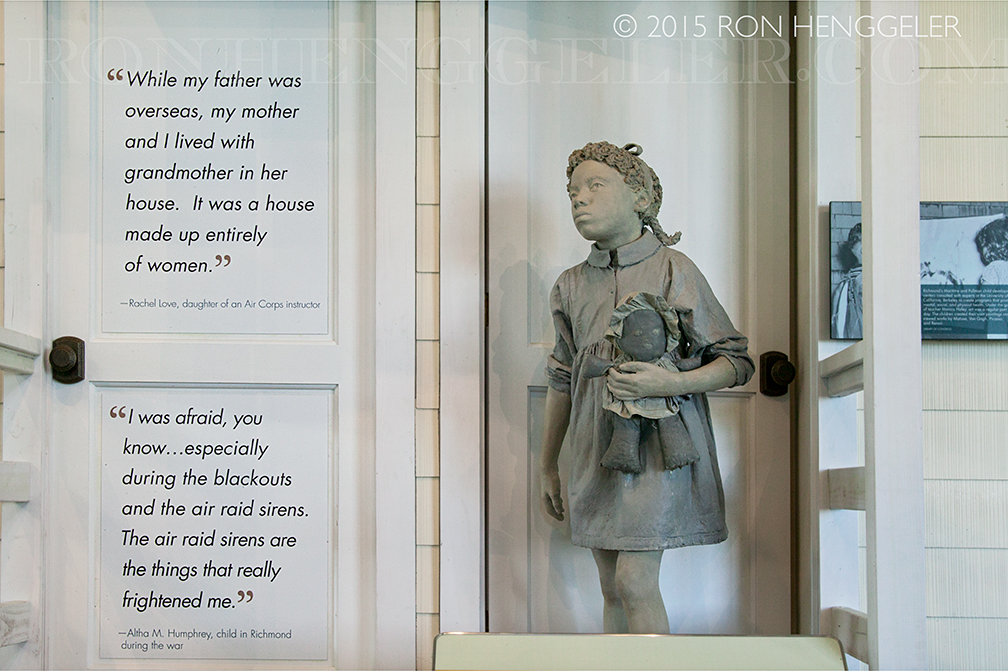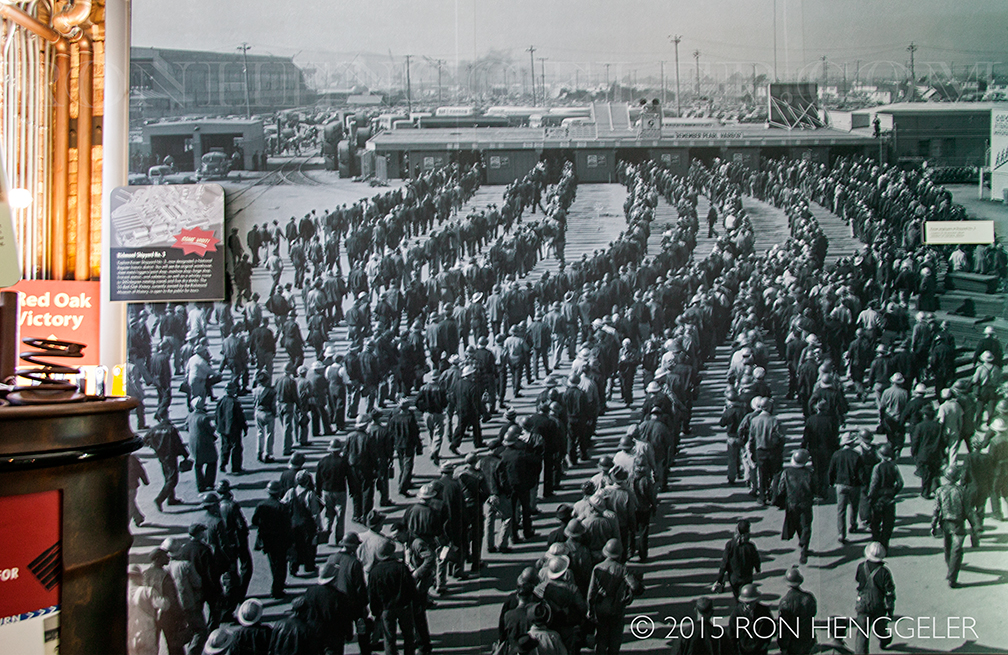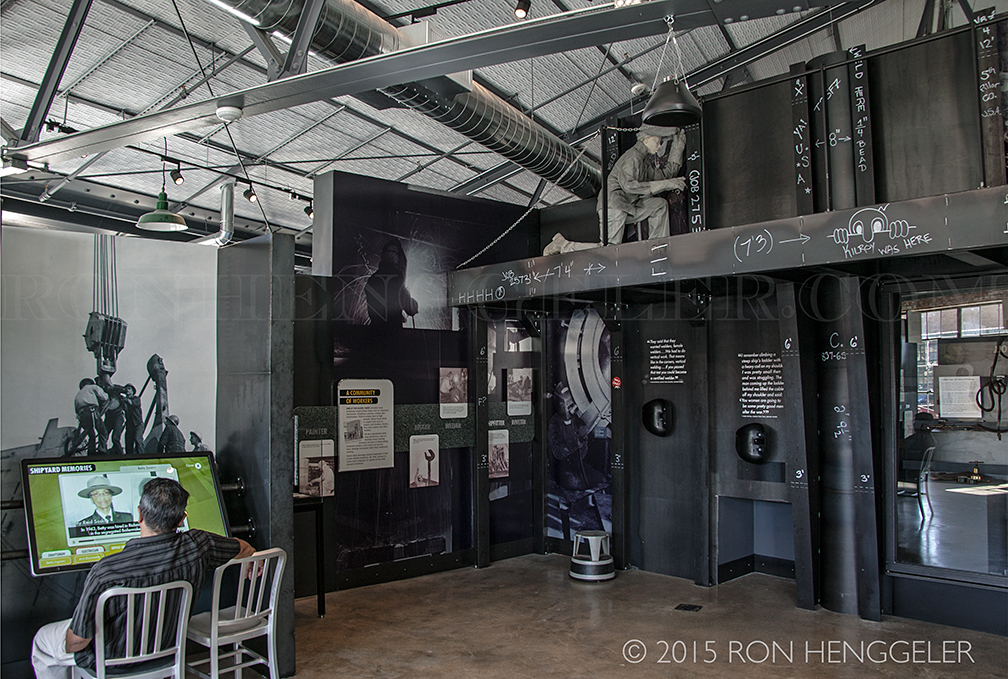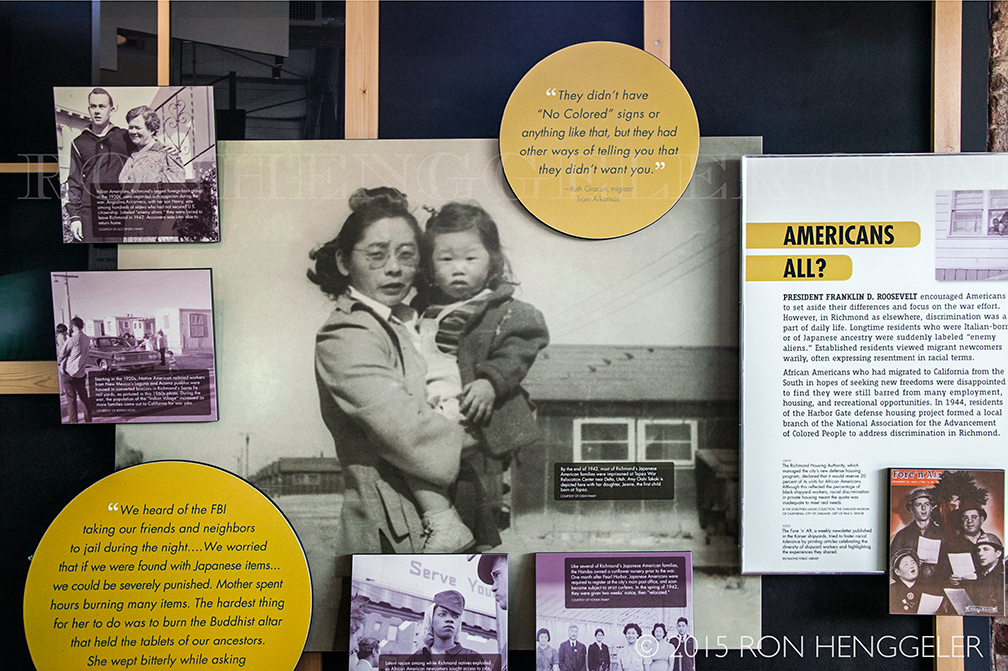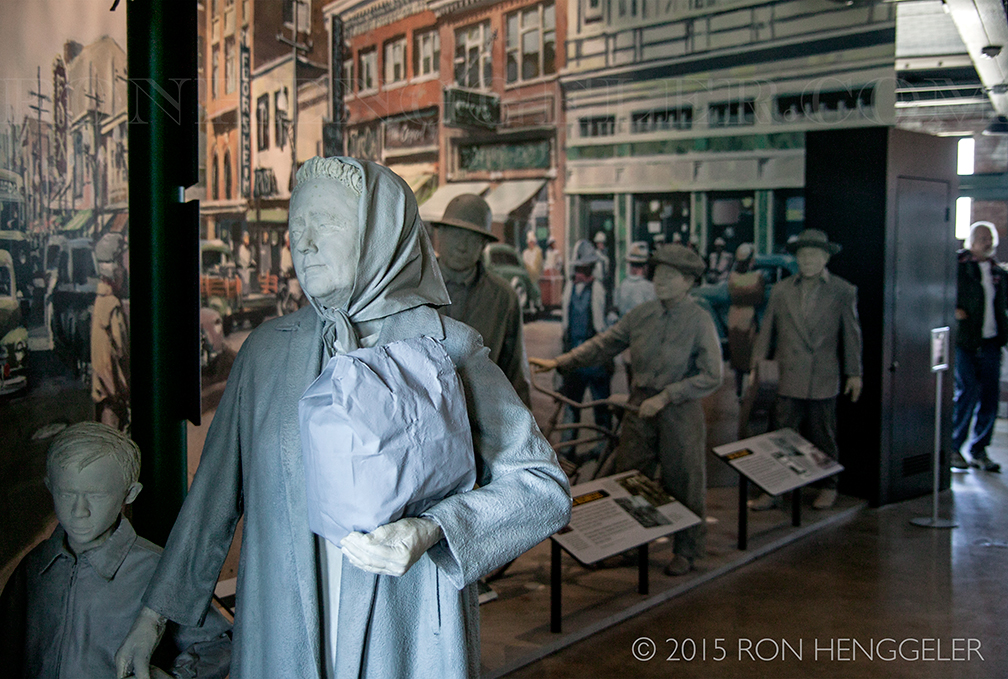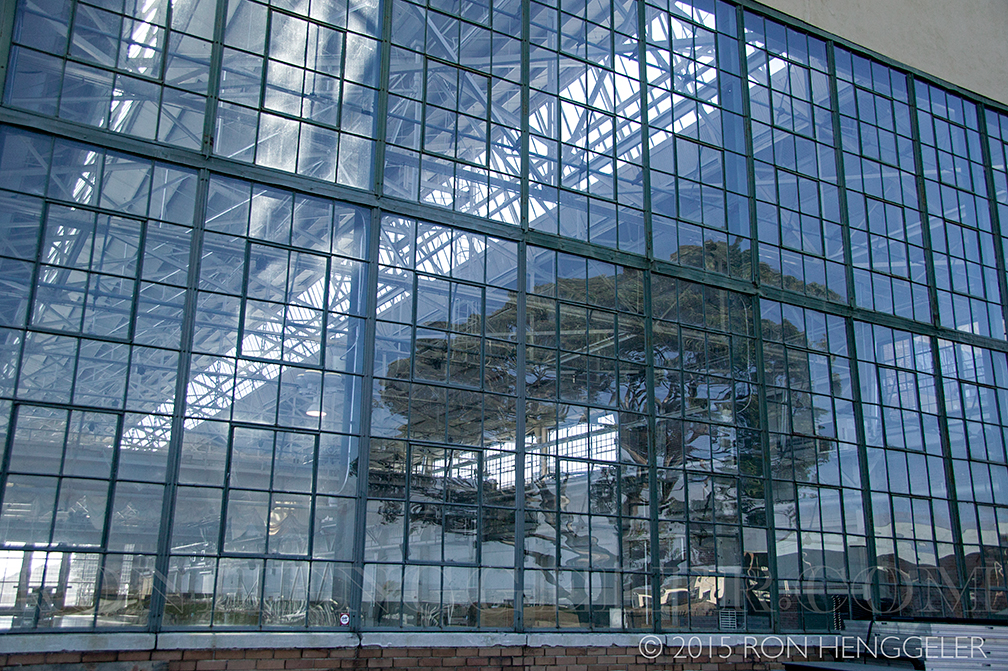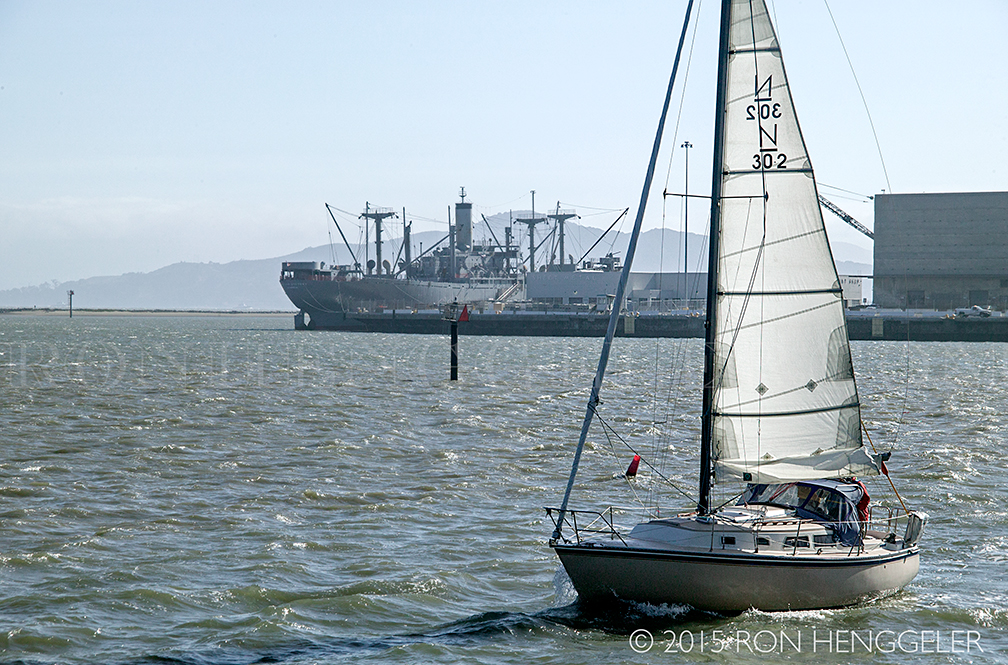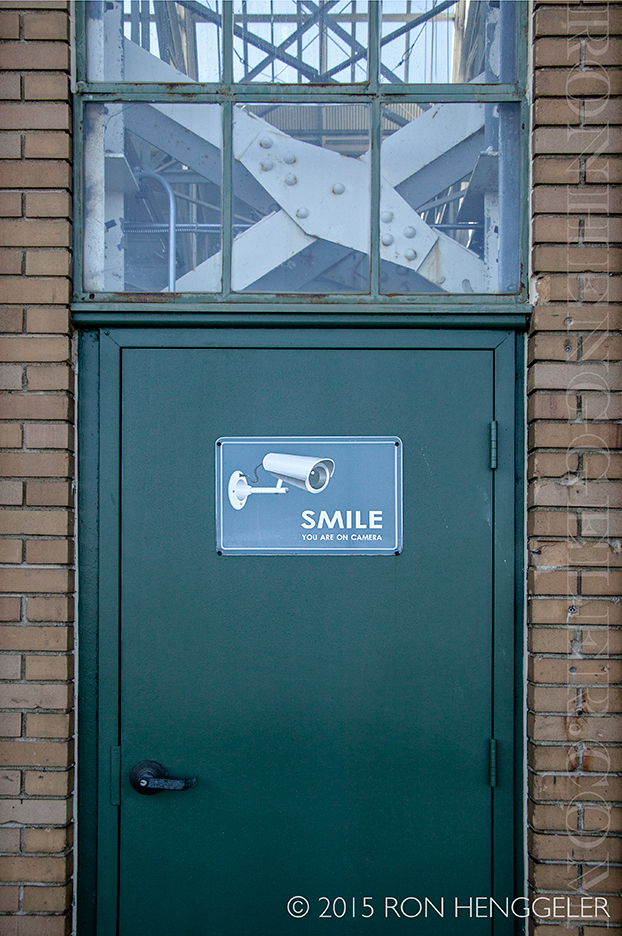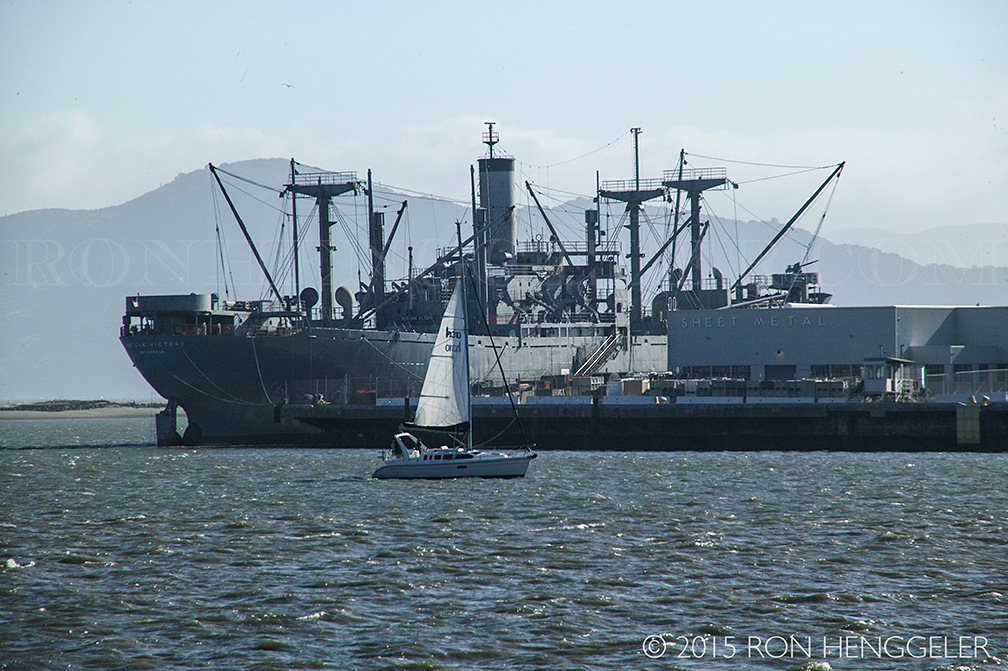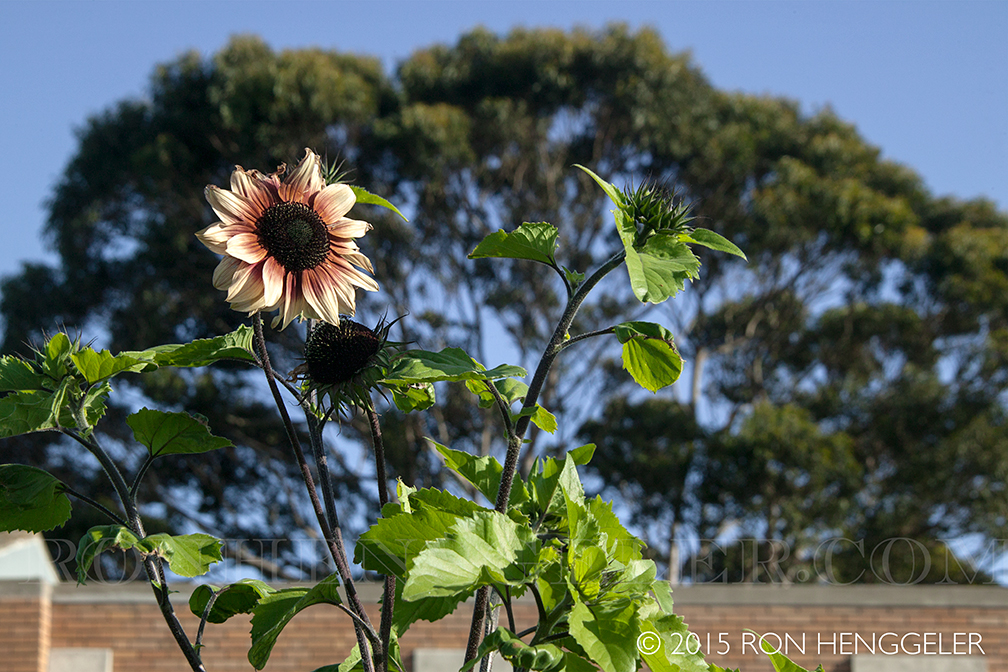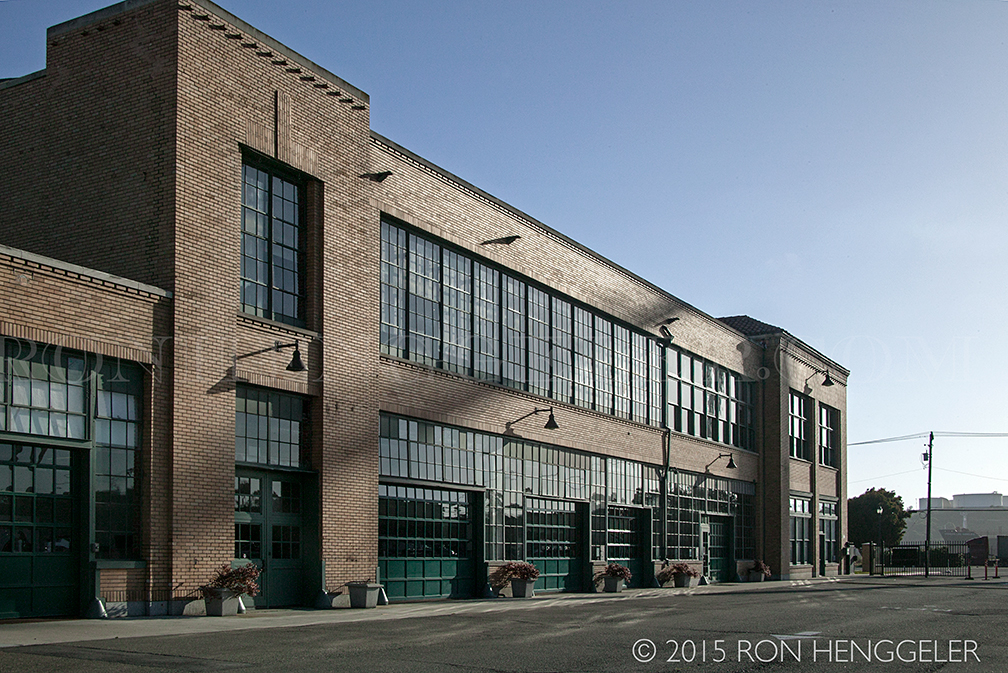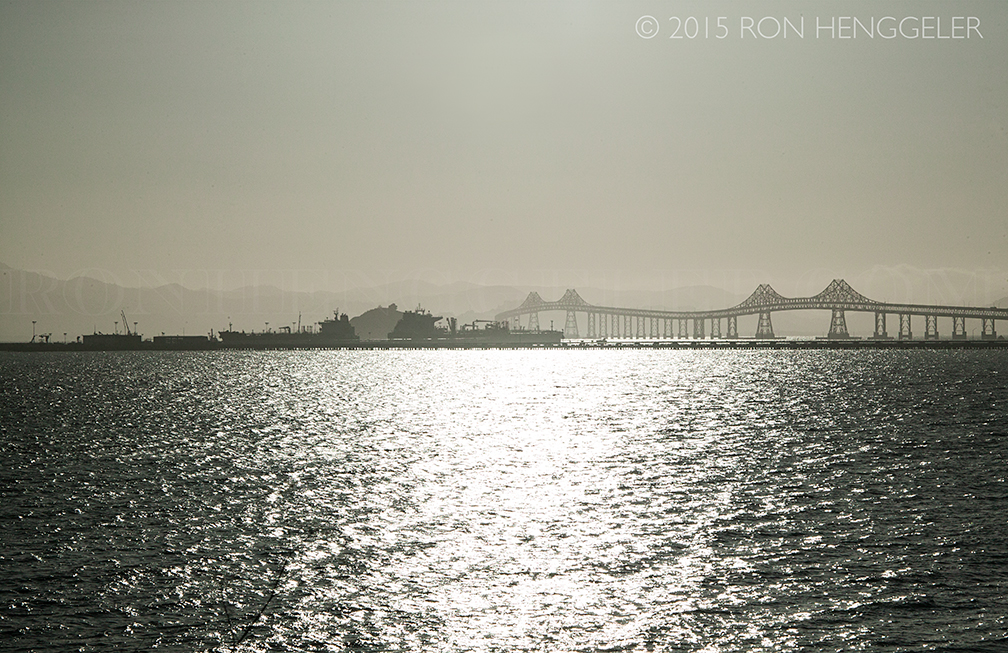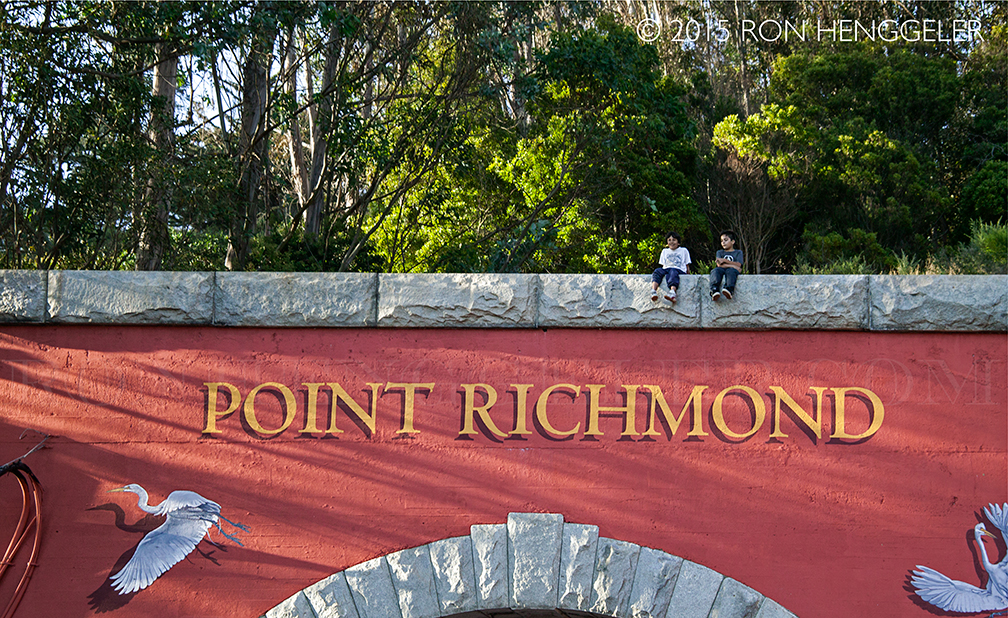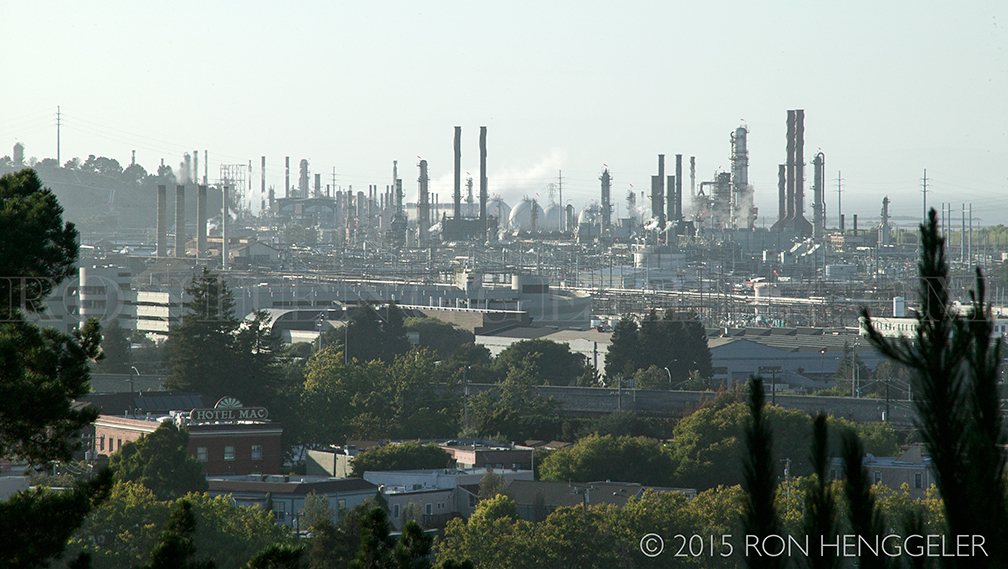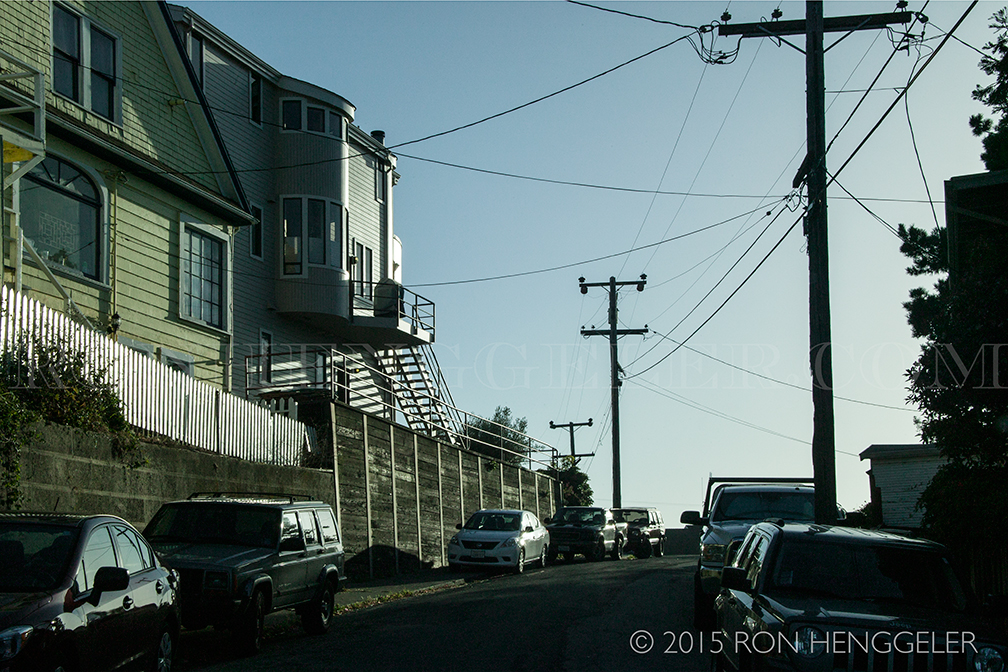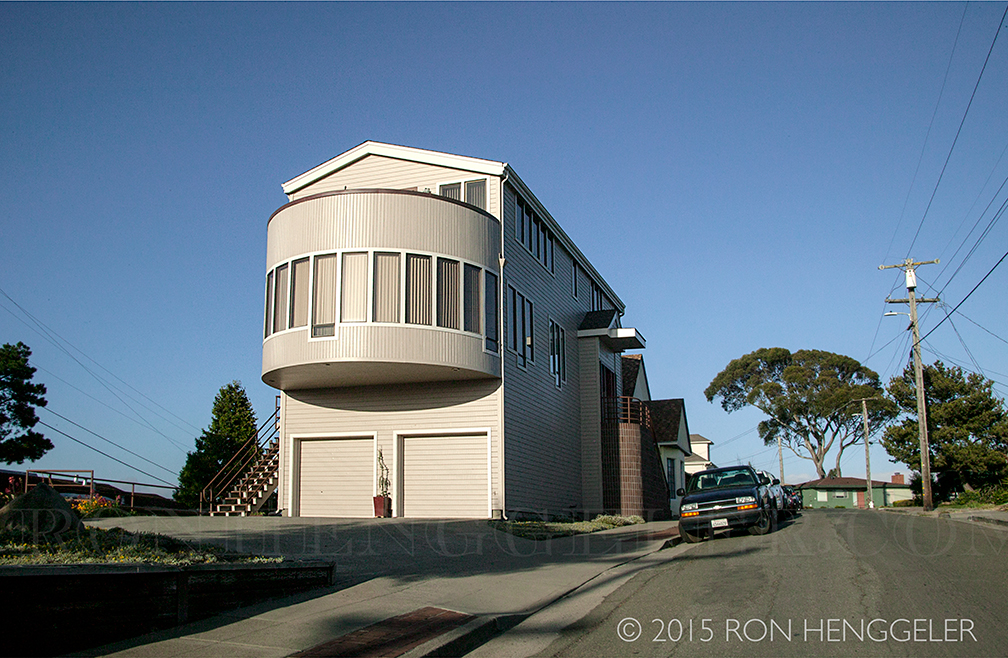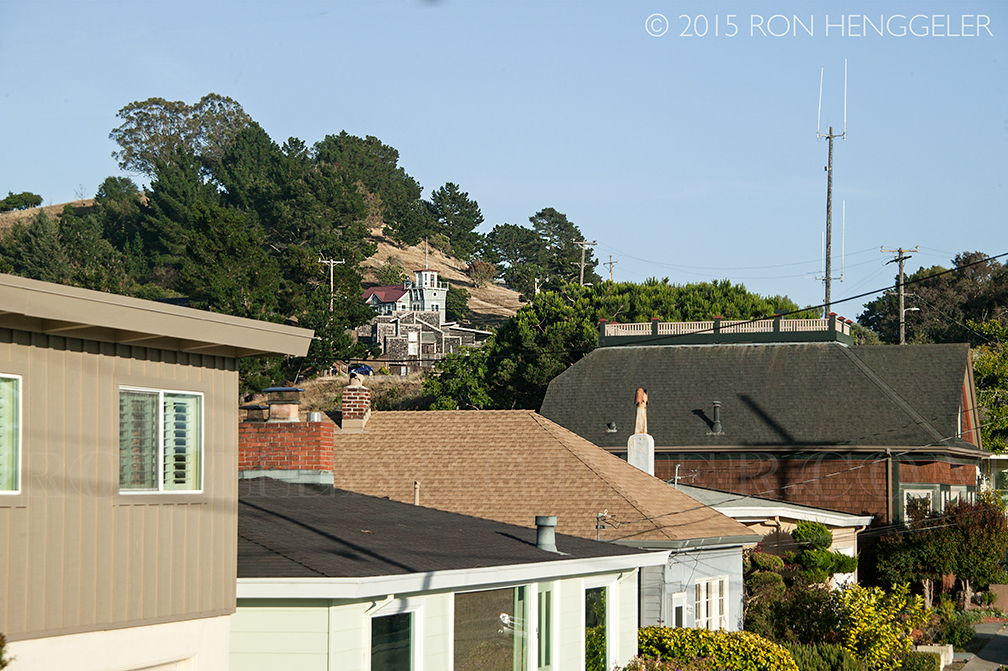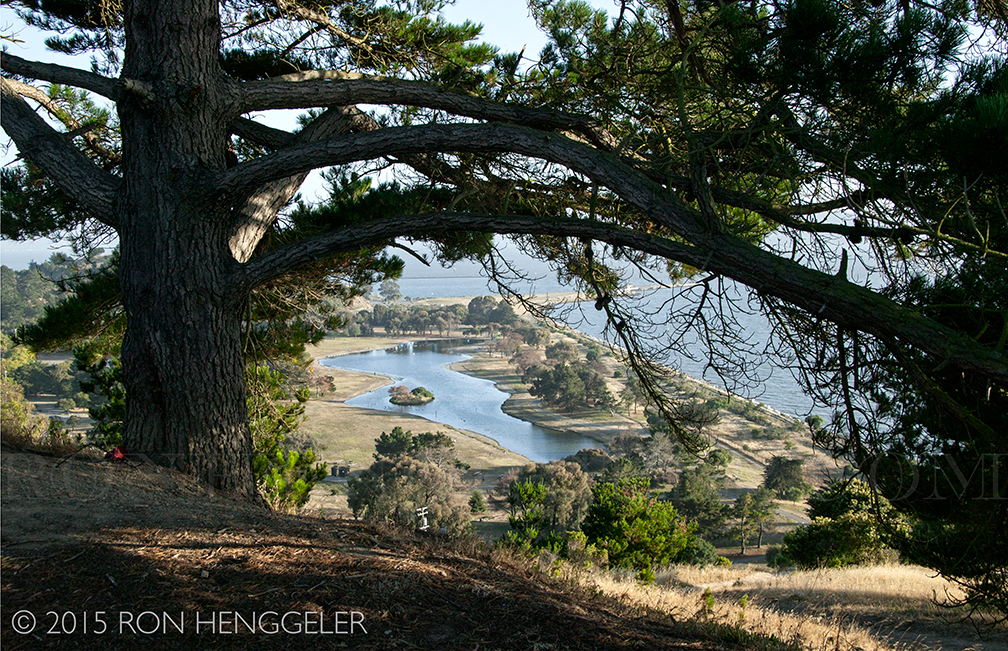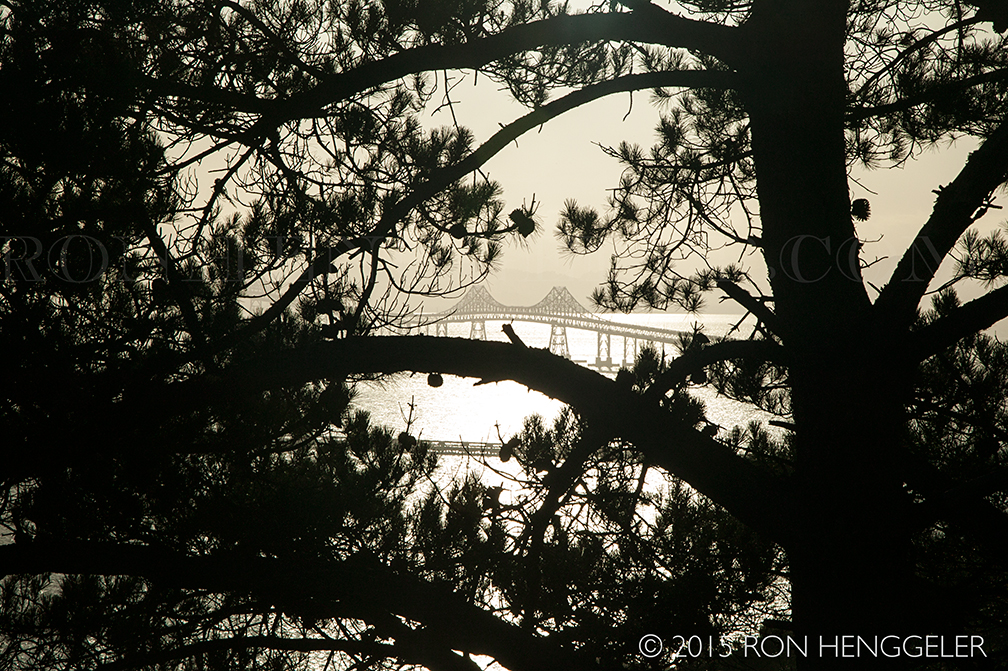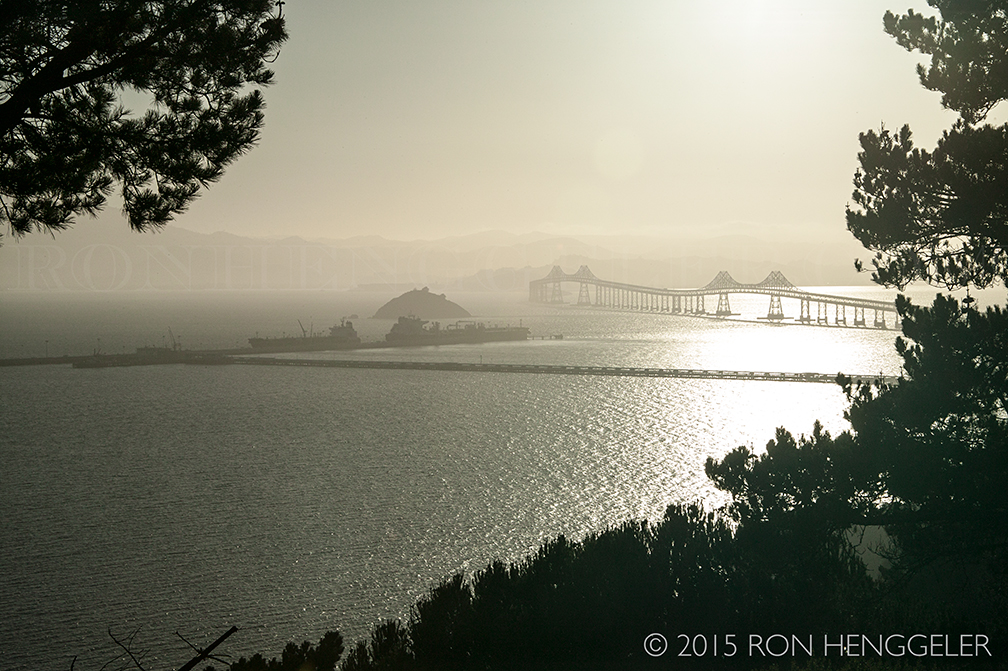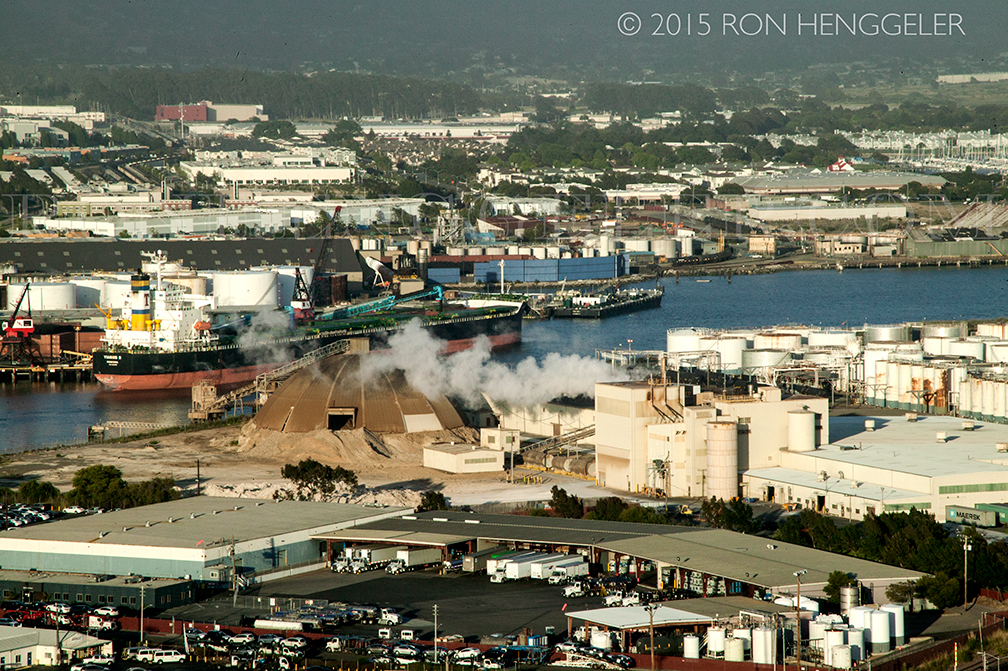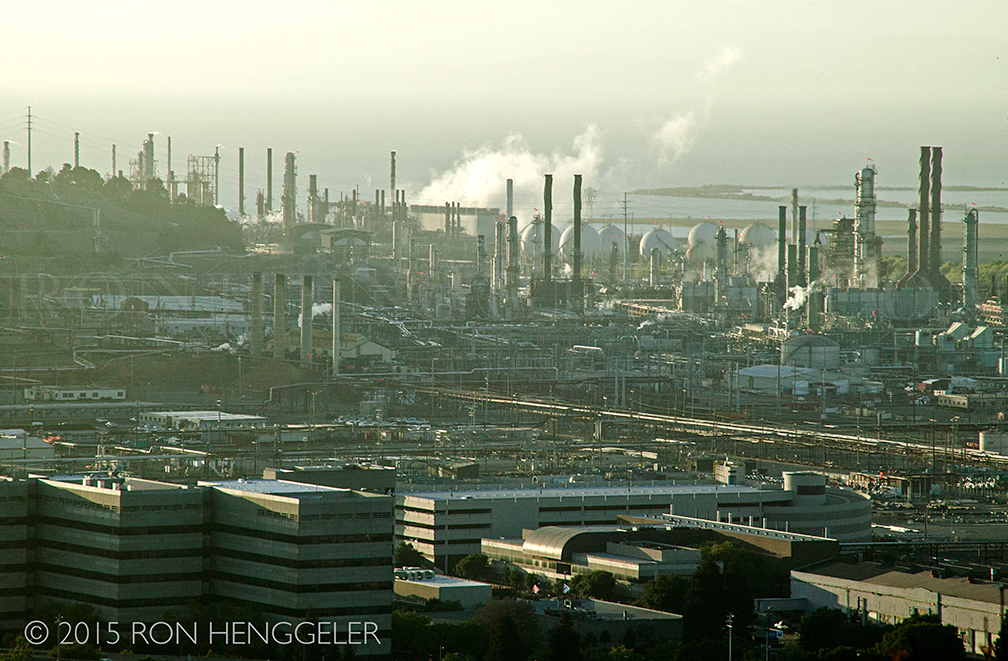RON HENGGELER |
June 26, 2015
Rosie the Riveter Museum in Richmond California
I recently listened to a morning radio interview on KQED Forum hosted by Michael Krasny. He spoke with Betty Reid Soskin, who at 93, is the oldest national park ranger in the United States. She came to the Bay Area in 1927 as a six-year old girl, and now works at the Rosie the Riveter/World War II Home Front National Historical Park in Richmond. The interview prompted me to visit the Rosie the Riveter Museum. Here are some of my photos from the visit that day. You can listen to the interview with this fascinating woman here: http://www.kqed.org/a/forum/R201506101000
San Francisco's Bryant St and 2nd Street entrance to the Bay Bridge with the RinconTower in the distance. |
The tower of the new eastern span of the Bay Bridge |
The Rosie the Riveter Museum in Richmond An unusual urban national park, the Rosie the Riveter/WWII Home Front National Historical Park is located on the waterfront in Richmond, CA. It is the flagship national park for telling stories of the home front efforts across the United States. Park sites you can visit include the Oil House Visitor Center, the Rosie the Riveter Memorial, the historic Ford Assembly plant, Maritime Childcare Center, and more. |
A view from the front entrance to the Rosie the Riveter/WWII Home Front National Historical Park |
|
American women entered the workforce in unprecedented numbers during World War II, as widespread male enlistment left gaping holes in the industrial labor force. Between 1940 and 1945, the female percentage of the U.S. workforce increased from 27 percent to nearly 37 percent, and by 1945 nearly one out of every four married women worked outside the home. “Rosie the Riveter,” star of a government campaign aimed at recruiting female workers for the munitions industry, became perhaps the most iconic image of working women during the war. |
While women worked in a variety of positions previously closed to them during World War II, the aviation industry saw the greatest increase in female workers. More than 310,000 women worked in the U.S. aircraft industry in 1943, making up 65 percent of the industry’s total workforce (compared to just 1 percent in the pre-war years). The munitions industry also heavily recruited women workers, as illustrated by the U.S. government’s “Rosie the Riveter” propaganda campaign. Based in small part on a real-life munitions worker, but primarily a fictitious character, the strong, bandanna-clad Rosie became one of the most successful recruitment tools in American history, and the most iconic image of working women in the World War II era. |
|
During World War II, some 350,000 women served in the U.S. Armed Forces, both at home and abroad. They included the Women’s Airforce Service Pilots, who on March 10, 2010, were awarded the prestigious Congressional Gold Medal. |
Although most women took on male dominated trades during World War II, they were expected to return to their everyday housework once men returned from the war. Government campaigns targeting women were addressed solely at housewives, likely because already-employed women would move to the higher-paid "essential" jobs on their own. |
In movies, newspapers, posters, photographs and articles, the Rosie the Riveter campaign stressed the patriotic need for women to enter the work force. On May 29, 1943, The Saturday Evening Post published a cover image by the artist Norman Rockwell, portraying Rosie with a flag in the background and a copy of Adolf Hitler’s racist tract “Mein Kampf” under her feet. Though Rockwell’s image may be the most commonly known version of Rosie the Riveter, her prototype was actually created in 1942 and featured on a poster for the Westinghouse power company under the headline “We Can Do It!” Early in 1943, a popular song debuted called “Rosie the Riveter,” written by Redd Evans and John Jacob Loeb, and the name went down in history. |
AMERICAN WOMEN IN WORLD WAR II http://www.history.com/topics/world-war-ii/american-women-in-world-war-ii |
THE U.S. HOME FRONT DURING WORLD WAR II http://www.history.com/topics/world-war-ii/us-home-front-during-world-war-ii |
According to the Encyclopedia of American Economic History, "Rosie the Riveter" inspired a social movement that increased the number of working American women from 12 million to 20 million by 1944, a 57% increase from 1940. |
Though women who entered the workforce during World War II were crucial to the war effort, their pay continued to lag far behind their male counterparts: Female workers rarely earned more than 50 percent of male wages. |
|
|
|
|
|
|
|
|
|
|
|
|
|
|
|
|
|
|
|
|
|
|
|
JAPANESE-AMERICAN RELOCATION http://www.history.com/topics/world-war-ii/japanes... Two months after the Japanese bombing of Pearl Harbor, U.S. President Franklin D. Roosevelt signed Executive Order 9066 ordering all Japanese-Americans to evacuate the West Coast. This resulted in the relocation of approximately 120,000 people, many of whom were American citizens, to one of 10 internment camps located across the country. Traditional family structure was upended within the camp, as American-born children were solely allowed to hold positions of authority. Some Japanese-American citizens of were allowed to return to the West Coast beginning in 1945, and the last camp closed in March 1946. In 1988, Congress awarded restitution payments to each survivor of the camps. |
|
Sandy Gentler-Mack working at the front desk inside the museum |
The historic Ford Assembly Plant which is located next to the Rosie the Riveter Museum |
After visiting the museum, Dave and I walked around the waterfront nearby and later drove to a hilltop park to watch the sunset. |
In the distance, the SS Red Oak Victory is a US military Victory ship of the Boulder Victory-class cargo ship used in the Second World War. |
|
An interior shot of the historic Ford Assembly Plant which is located next to the Rosie the Riveter Museum |
An interior shot of the historic Ford Assembly Plant which is located next to the Rosie the Riveter Museum |
|
|
Now a museum, the SS Red Oak Victory is a US military Victory ship of the Boulder Victory-class cargo ship used in the Second World War. |
|
|
|
|
|
|
|
|
|
A far distant Mt Tamalpais |
The Richmond-San Rafael Bridge |
The Richmond-San Rafael Bridge |
|
|
|
|
|
A view of Washington Park in the distance |
|
|
A view from Washington Park of the Miller/Knox Regional Shoreline, a 295-acre bayside park in the Brickyard Cove neighborhood of the Point Richmond District in Richmond, California |
A view from Washington Park of the Miller/Knox Regional Shoreline, a 295-acre bayside park in the Brickyard Cove neighborhood of the Point Richmond District in Richmond, California |
|
A view from Washington Park of the Richmond-San Rafael Bridge |
A view from Washington Park of the Richmond-San Rafael Bridge |
A view from Washington Park of the Richmond-San Rafael Bridge |
A view from Washington Park of the Miller/Knox Regional Shoreline |
A view from Washington Park of Richmond California |
A view from Washington Park of Richmond California |
David sitting on the top of Washington Park |
|
A view from Washington Park of the Richmond Oil Refineries |
The Richmond-San Rafael Bridge |
The Richmond-San Rafael Bridge |
|
While returning to San Francisco, a view on the Richmond-San Rafael Bridge |
While returning to San Francisco, a view on the Richmond-San Rafael Bridge |
While returning to San Francisco, a view on the Richmond-San Rafael Bridge |
While returning to San Francisco, a view on the Golden Gate Bridge |
While returning to San Francisco, a view on the Golden Gate Bridge |
Newsletters Index: 2015, 2014, 2013, 2012, 2011, 2010, 2009, 2008, 2007, 2006
Photography Index | Graphics Index | History Index
Home | Gallery | About Me | Links | Contact
© 2015 All rights reserved
The images are not in the public domain. They are the sole property of the
artist and may not be reproduced on the Internet, sold, altered, enhanced,
modified by artificial, digital or computer imaging or in any other form
without the express written permission of the artist. Non-watermarked copies of photographs on this site can be purchased by contacting Ron.




